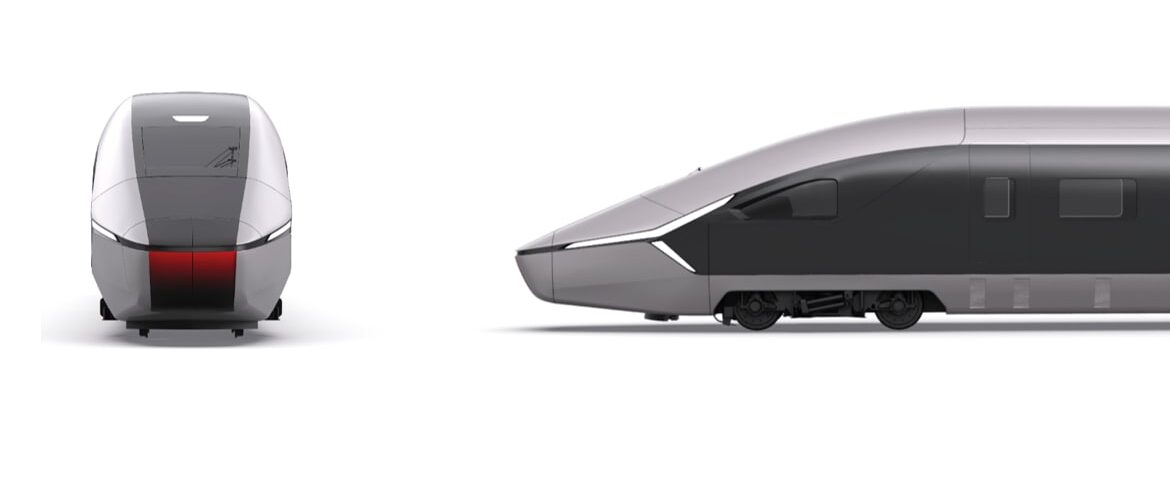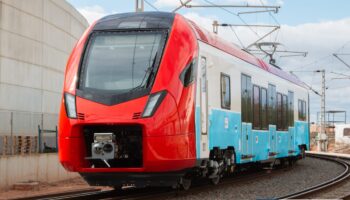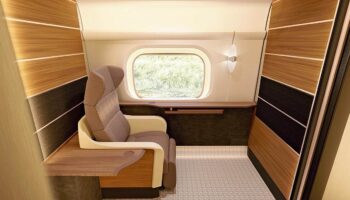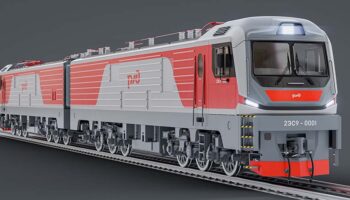Russia: At a December meeting of the Council of Federation dedicated to the transport industry in Russia’s regions, Oleg Toni, deputy general director of Russian Railways (RZD), announced plans to introduce an automatic train operation system in rolling stock under development.
The Russian news agency TASS quotes him as saying that “the first Russian high-speed electric train will be equipped with an AI-based digital control and automatic train operation system”. ROLLINGSTOCK contacted Pavel Popov, technical head for the implementation of ATO at RZD and deputy general director of NIIAS, the RZD’s institute engaged in intelligent control and train safety systems. According to him, the relevant technologies are incorporated into the future train as it has already been decided that the train must be in line with the latest technological trends in the industry when it enters service. In May, the company’s CEO Oleg Belozerov said that a full-scale mock-up would be ready by 2027.
The train is expected to have a computer vision system and equipment for remote control of rolling stock and its high-precision positioning. According to Pavel Popov, these technologies will ensure the GoA3 operation, when the train runs automatically but there is always a driver on board.
This level of automation is being developed and tested on the Lastochka EMUs on the Moscow Central Circle. “Benchmarking of computer systems and drivers shows that the computer vision detects obstacles on average 14 seconds earlier than humans”, explains Pavel Popov. Compared to the 160 km/h Lastochka, the 360 km/h high-speed train currently under development will require complex technological solutions to ensure its automatic operation on main lines.
Testing of the Lastochka’s remote control at the Moscow Central Circle in April 2023. Source: RZD
The high-speed train is being developed by the Engineering Centre of Railway Transport, jointly established by Russian Railways and Sinara-Transport Machines, STM, in 2019. The new vehicle will first be used on the Moscow–Saint Petersburg high-speed railway. At the meeting of the Council of Federation, Alexander Fedorchuk, director of the Department of State Railway Transport Policy of the Ministry of Transport, announced that the project for this high-speed railway would be submitted by the end of the year with updated financing terms and construction time. Earlier this summer, STM reported a potential order for 50 eight-car high-speed trains, with a possible further increase to 75 vehicles between 2028 and 2032. In his presentation, Oleg Toni noted that the train’s design would allow for modifications to ensure the transport of high-paying and special freight.
On a global scale, Japan has announced its plans to raise the ATO level of its high-speed trains to GoA3 and GoA4. According to the local operator JR East, GoA4 shunting operations on a route from the depot to the central station will be adopted in Niigata in the late 2020s. Transition to GoA3 passenger service on a line between Niigata and Tokyo is expected from the mid-2030s.















